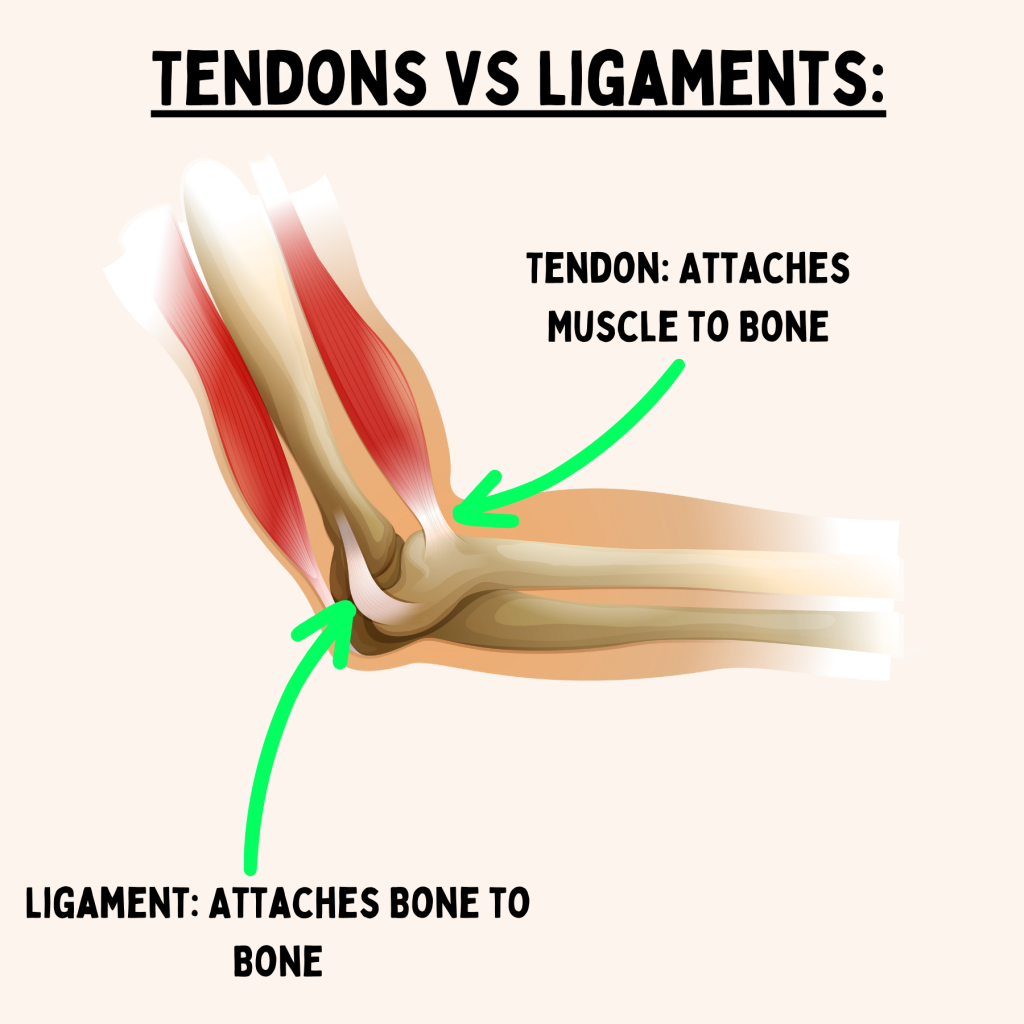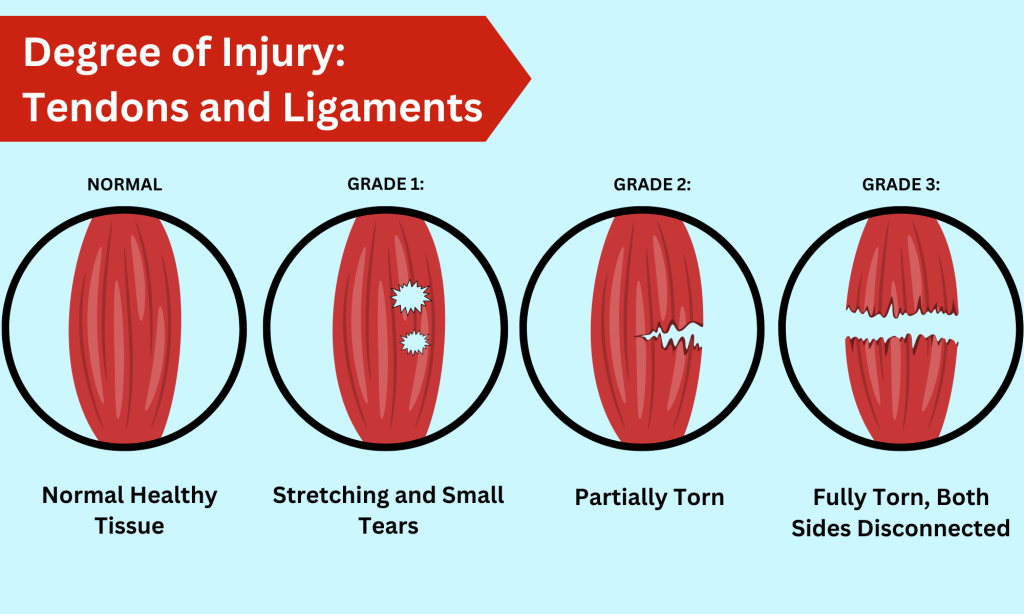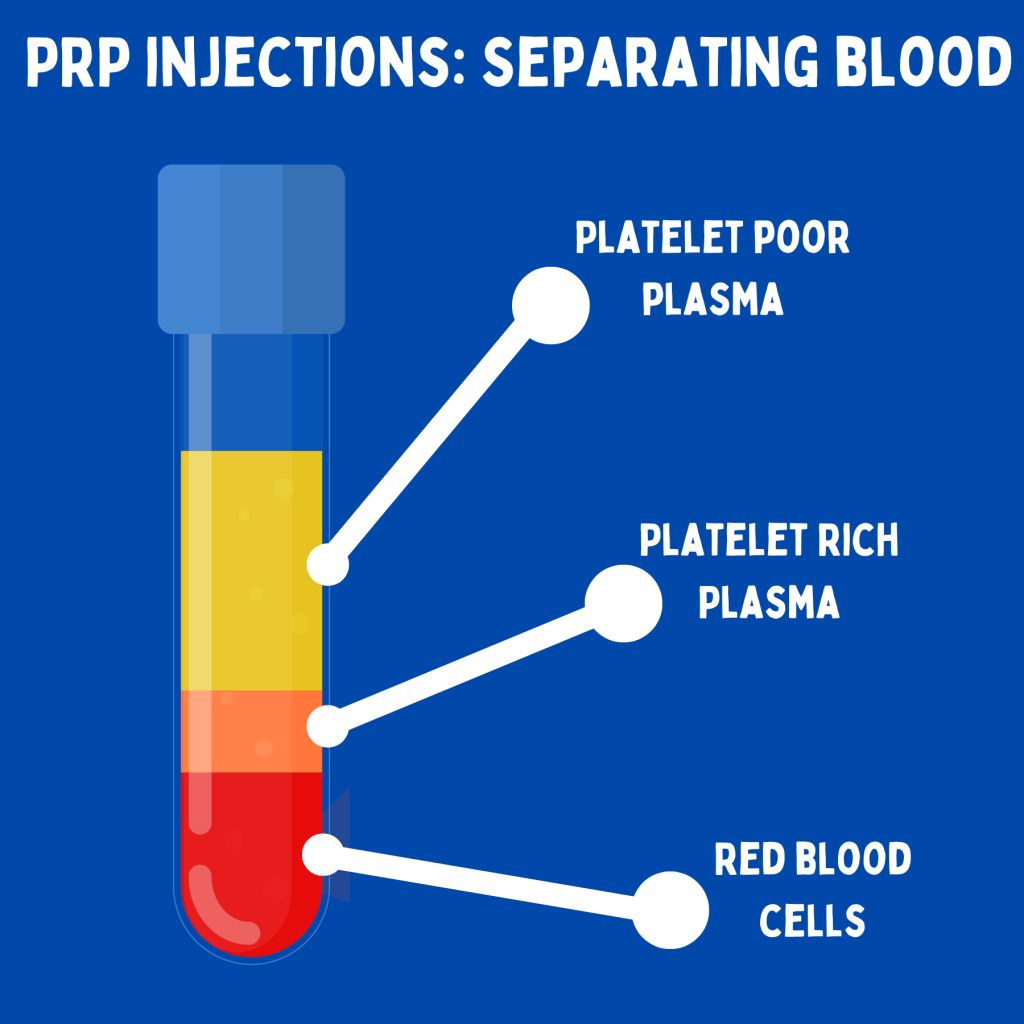Ligament and tendon injuries are among the most common afflictions faced by individuals, from amateur athletes to weekend warriors. Whether it’s a strained ligament from overexertion at the gym or a tendon tear from a sudden misstep, these injuries can cause significant pain and hinder one’s quality of life. However, in recent years, the field of regenerative medicine has emerged as a beacon of hope, offering novel solutions for the treatment of such injuries.
What Is the Difference Between a Ligament and a Tendon?
A ligament and a tendon are both crucial connective tissues in the human body, but they serve different functions and have distinct structural characteristics.
Ligament:
Ligaments connect bones to other bones, providing stability and support to joints, which helps prevent excessive movement that could lead to injuries. They are composed of dense, fibrous connective tissue with slightly more elastic fibers, allowing them to stretch to a limited extent while maintaining joint stability.
Tendon:
Tendons connect muscles to bones, facilitating movement by transmitting the force generated by muscle contractions to the skeleton. Tendons are primarily composed of tightly packed collagen fibers, making them strong and capable of withstanding tension.

Ligament and Tendon Injuries: What are They?
These injuries encompass a wide array of conditions affecting muscles, tendons, ligaments, and fascia. These injuries can occur due to various reasons, including sports activities, repetitive motions, accidents, or simply the natural aging process. Some common injuries include:
1. Strains: Resulting from the overstretching or tearing of muscles or tendons, strains often occur during activities that involve sudden or excessive exertion.
2. Sprains: Injuries to ligaments that connect bones to each other, typically caused by sudden twists, falls, or impacts.
3. Tendonitis: Inflammation of tendons due to repetitive movements or overuse, commonly seen in athletes and individuals engaged in repetitive occupational tasks.
4. Tears: Partial or complete ruptures of soft tissue structures, which can occur traumatically or gradually over time due to chronic degeneration or wear and tear.
Why Isn’t My Injury Healing on Its Own?
Ligament and tendon injuries often struggle to heal effectively due to their limited blood supply. Unlike muscles, which are richly vascularized, ligaments and tendons have fewer blood vessels, resulting in a reduced delivery of essential nutrients and oxygen required for the healing process. Additionally, the dense and fibrous nature of these connective tissues means they have fewer cells that can facilitate repair and regeneration. Consequently, the healing process is slower and less efficient, often leading to incomplete recovery and a higher risk of re-injury. This biological challenge necessitates prolonged rehabilitation and sometimes surgical intervention to restore function and stability.
Conservative Care Options for Ligament and Tendon Injuries:
- Rest: Resting the injured area is crucial to allow the body’s natural healing processes to take place. Avoiding activities that exacerbate pain or strain the injured tissue is essential during the initial stages of recovery.
- Ice Therapy: Applying ice packs to the injured area can help reduce pain, swelling, and inflammation.
- Over-the-counter Pain Medications: Nonsteroidal anti-inflammatory drugs (NSAIDs) such as ibuprofen or naproxen can help relieve pain and reduce inflammation
- Physical Therapy: Physical therapy plays a vital role in rehabilitating these injuries by focusing on strengthening, stretching, and restoring function to the injured area.
- Bracing or Splinting: Depending on the severity and location of the injury, wearing a brace or splint may provide additional support and stability to the affected area, preventing further damage and promoting proper healing.
- Electrotherapy: Modalities such as transcutaneous electrical nerve stimulation (TENS) or electrical muscle stimulation (EMS) may be used to relieve pain, reduce muscle spasms, and improve circulation in the injured area.
Regenerative Medicine: An Alternative Treatment
Regenerative medicine is a cutting-edge field of healthcare that focuses on harnessing the body’s own healing abilities to repair and replace damaged or diseased tissues. It involves using advanced techniques and technologies to stimulate the body’s natural regenerative processes, such as cell growth, tissue repair, and tissue regeneration. Regenerative medicine aims to restore the structure and function of damaged tissues by promoting the growth of new, healthy cells. This innovative approach holds great promise for treating a wide range of medical conditions, including soft tissue injuries
Is Regenerative Medicine Only Used for Severe Injuries?
No, regenerative medicine is not limited to treating only severe ligament and tendon injuries. While regenerative therapies are beneficial for severe or chronic cases, they are also utilized for a wide range of injuries, including strains, sprains, and tears. In fact, regenerative techniques such as Platelet-Rich Plasma (PRP) therapy and Micro Fragmented Adipose Tissue (MFAT) are often part of conservative treatment approaches for various soft tissue injuries. By reducing inflammation, and accelerating healing, regenerative medicine can play a valuable role in addressing a spectrum of soft tissue ailments, regardless of severity.
Ligament and Tendon Injuries: Degrees of Injury
Ligament and Tendon injuries can range in severity from mild to severe. Each degree represents a different level of tissue damage and associated symptoms. The three primary degrees of soft tissue injuries are:

- First Degree: First-degree injuries are considered mild and involve minimal tissue damage. Symptoms typically include minor pain, swelling, and tenderness. There is usually no significant loss of function or range of motion. Examples of first-degree injuries include mild muscle strains or superficial cuts and bruises.
- Second Degree: Second-degree injuries are moderate in severity and involve partial tearing or stretching of the soft tissue. Symptoms may include moderate to severe pain, swelling, bruising, and difficulty using the affected area. Second-degree injuries can significantly impair function and may require medical attention for proper management. Examples include moderate muscle strains, sprains, or partial tendon tears.
- Third Degree: Third-degree injuries are the most severe and involve complete tearing or rupture of the soft tissue. These injuries typically result in severe pain, swelling, bruising, and loss of function in the affected area. Third-degree injuries often require prompt medical evaluation and intervention, including surgical repair in some cases. Examples include complete muscle tears, full ligament ruptures, or tendon avulsions
Can Regenerative Medicine Be an Alternative to Surgery?
Yes! Regenerative Medicine holds promise as an alternative or complementary approach to surgery for ligament and tendon injuries. Regenerative Medicine encompasses various techniques aimed at harnessing the body’s natural healing processes to repair damaged tissues. Here are some Regenerative Medicine approaches that can be used for ligament and tendon injuries:
Micro Fragmented Adipose Tissue (MFAT) Therapy
MFAT Therapy harnesses the regenerative potential of adipose tissue. Micro-fragmented adipose cells and their associated growth factors promote healing. By injecting MFAT into the injured tissue, the therapy stimulates tissue repair and regeneration, potentially allowing individuals to avoid surgery. This approach is a minimally invasive alternative that capitalizes on the body’s natural healing mechanisms.
Platelet-Rich Plasma (PRP)
PPR Therapy involves isolating and concentrating platelets from the patient’s own blood and injecting them into the injured muscle. PRP contains growth factors that can stimulate tissue repair processes. This accelerates healing and potentially enabling individuals to avoid surgery for soft tissue muscle injuries. This non-surgical approach offers a simple and low-risk option for promoting tissue regeneration and reduces the need for invasive interventions.

Risks of Surgery:
Tendon and ligament surgeries on joints are critical procedures aimed at restoring function and stability to damaged tissues essential for joint health. However, these surgeries come with inherent risks that patients should understand thoroughly:
- Risk of infection: Despite sterile surgical conditions, there is a possibility of post-operative infections that can delay healing and require additional treatment.
- Formation of excessive scar tissue: Scar tissue formation around the repaired tendon or ligament can sometimes limit joint mobility and require further intervention.
- Prolonged recovery: Recovery periods can be lengthy, often requiring extensive physical therapy to regain full range of motion and strength.
- Potential for reduced joint mobility or stiffness: Some patients may experience stiffness or limited joint movement following surgery, affecting overall joint function.
- Risk of re-injury or failure to heal: Despite surgical repair, there is a risk that the tendon or ligament may not heal properly, leading to a re-tear or requiring revision surgery.
Benefits of Regenerative Medicine:
Regenerative medicine procedures, such as stem cell therapy and platelet-rich plasma injections, utilize the patient’s own cells. This reduces the risk of complications like infections, allergic reactions, or rejection responses, which are common with traditional surgical interventions.
Here are some of the key differences in surgical vs regenerative medicine procedures:
- Minimal risk of infection: Since regenerative treatments often use the patient’s own cells or growth factors, the risk of infection is markedly reduced.
- Lower likelihood of scar tissue formation: Procedures such as stem cell therapy and platelet-rich plasma injections aim to stimulate healing without the excessive scar tissue typical of surgical interventions.
- Shorter recovery times: Many regenerative therapies have shorter recovery periods compared to invasive surgeries, promoting quicker return to daily activities.
- Preservation of joint mobility: These treatments often support natural tissue repair and regeneration, preserving joint mobility and function without the stiffness sometimes associated with surgery.
- Lower risk of treatment failure: While not guaranteed, regenerative treatments generally pose lower risks of treatment failure or the need for revision procedures.
While no medical treatment is entirely risk-free, regenerative medicine offers a compelling option with substantially lower risks compared to more invasive surgical approaches
Learn More About Alternative Ways to Alleviate Your Pain
Get back to doing the things you love, faster & without surgery.
Request an Appointment Today!